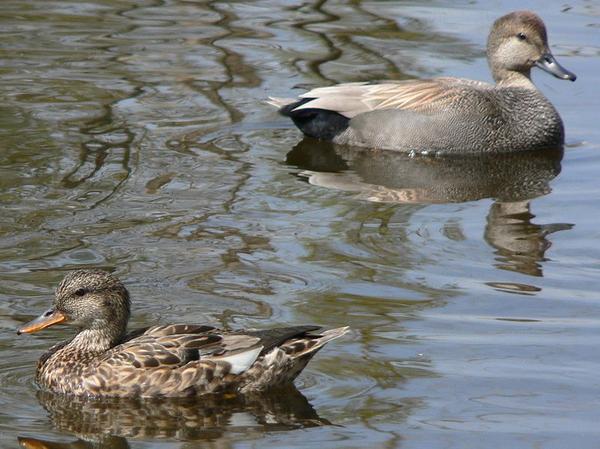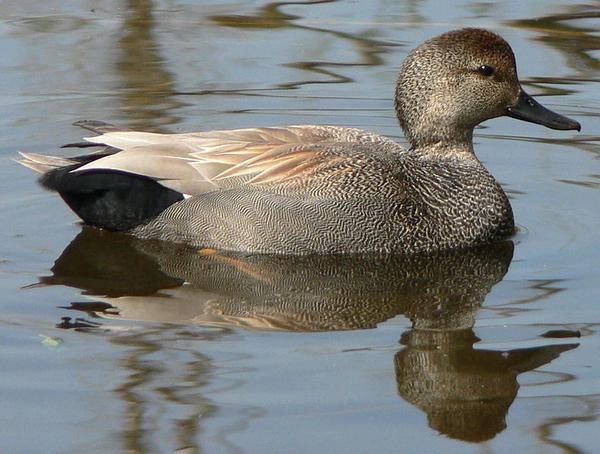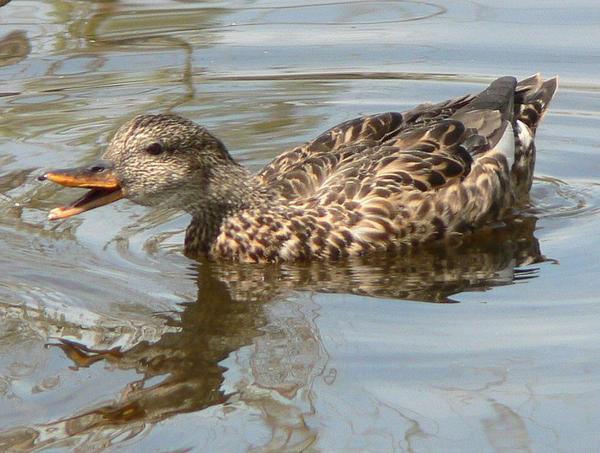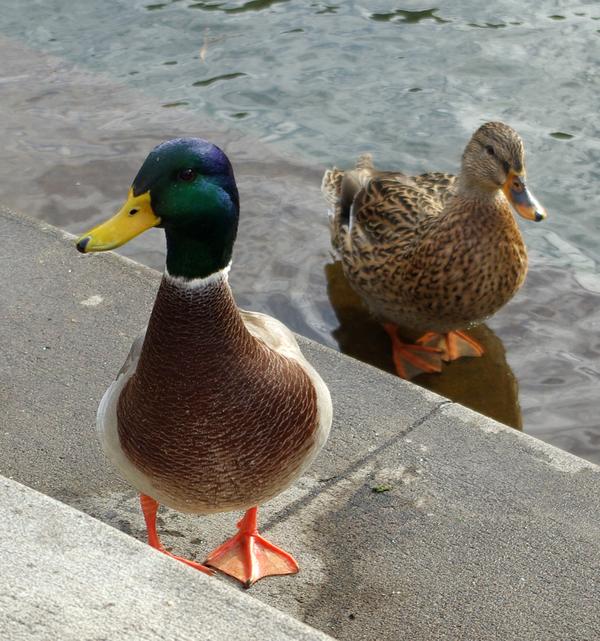
Male ducks are easy to identify because of their bright plumage but females are difficult because they’re camouflaged for nesting. Female gadwalls are really hard to figure out; they look like female mallards. If only they’d hang out with their mates the problem would be solved.
And by November it is. Unlike most ducks, gadwalls pair up in autumn. By November 97% of the females are swimming close to a male.
The males are much easier to figure out. From a distance they look boring brown with black butts but a closer look reveals their beauty. The male’s back has gray and russet tones, his chest is marbled, and his sides sport a tiny zigzag pattern.

Female gadwalls and mallards look alike except for this: The gadwalls have thinner darker bills, a square head shape, and a white speculum on each wing. (Click here to see the iridescent blue speculum on a female mallard.)

If you see a confusing female duck alone it might be a mallard, but not for long. 90% of female mallards have a mate by November.

Both species are paired up already.
(photo credits: gadwalls by Walter Siegmund via Wikimedia Commons. mallard pair by M. O. Stevens via Wikimedia Commons; click on the images to see the originals)